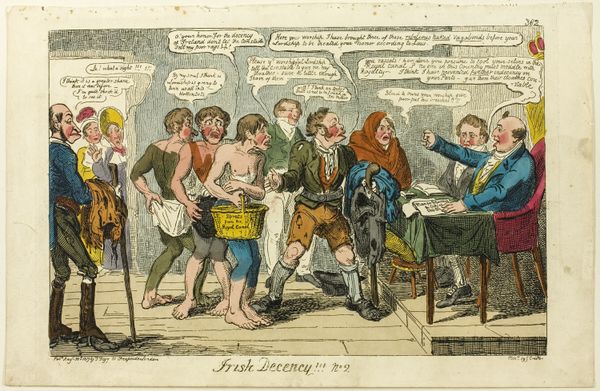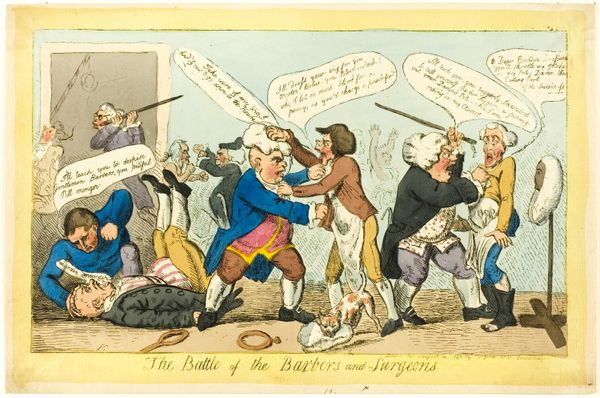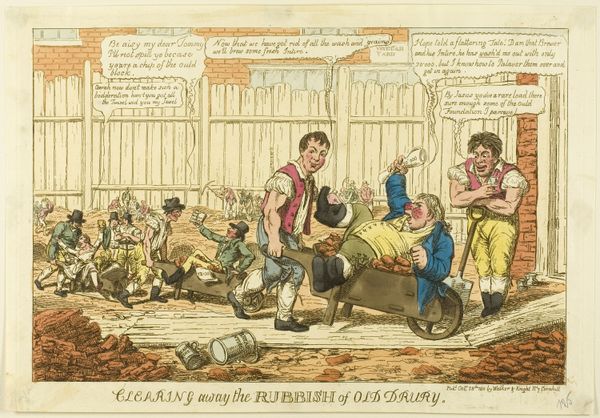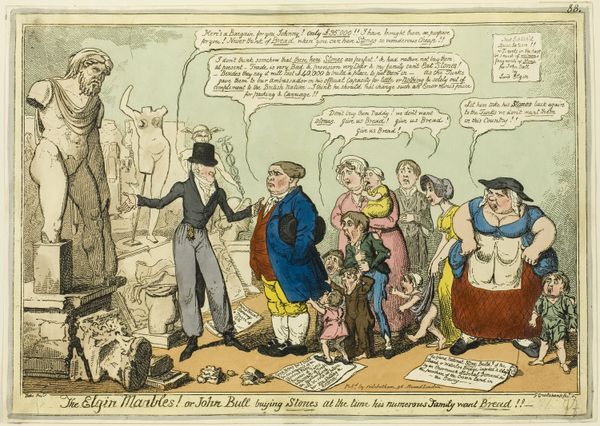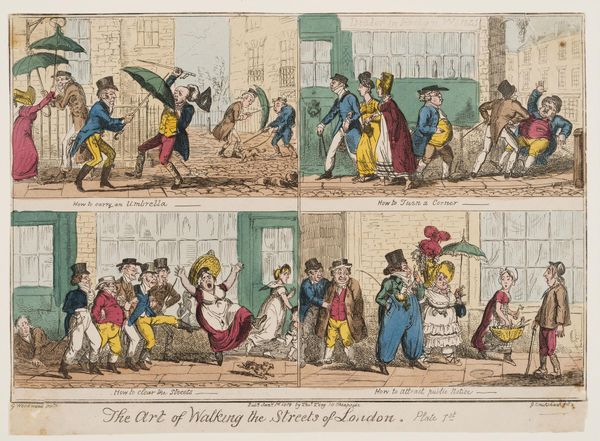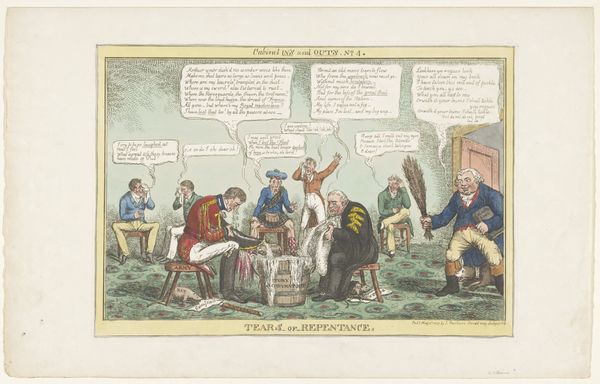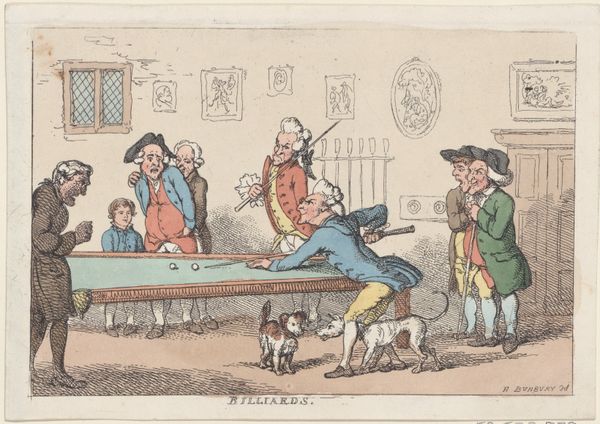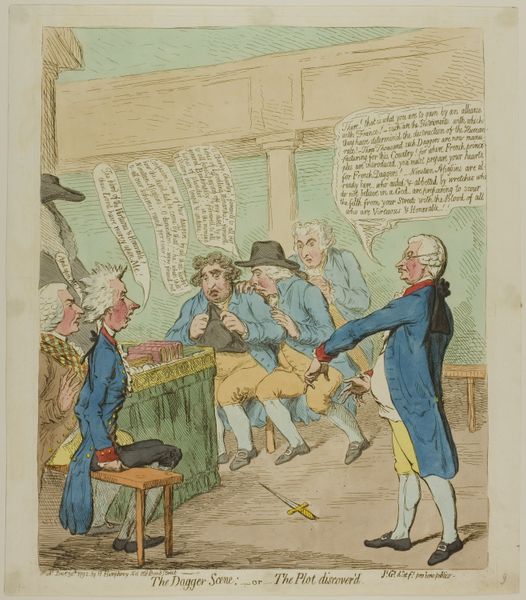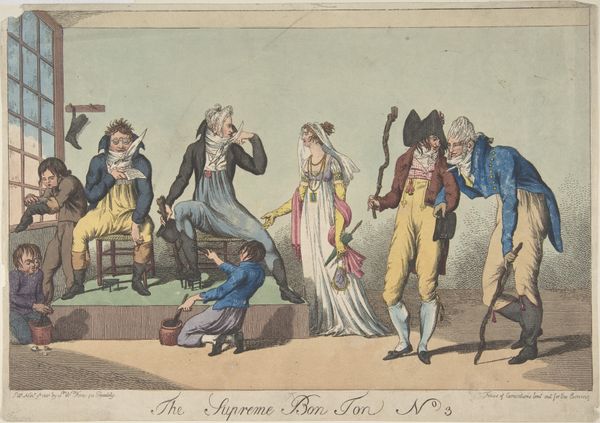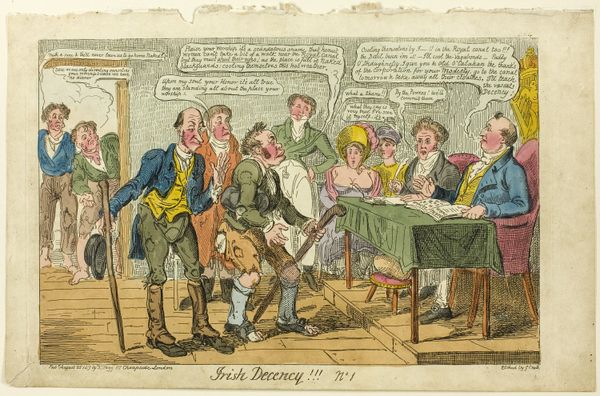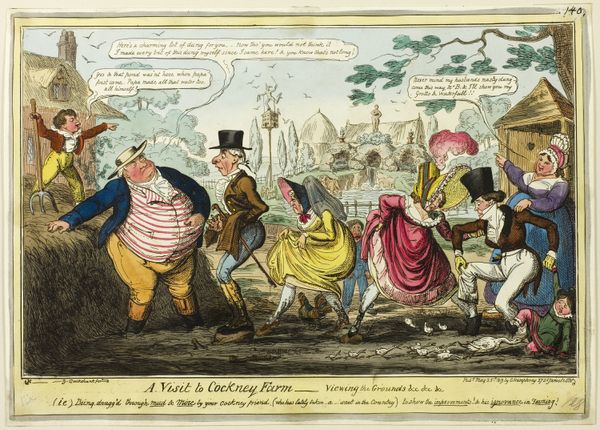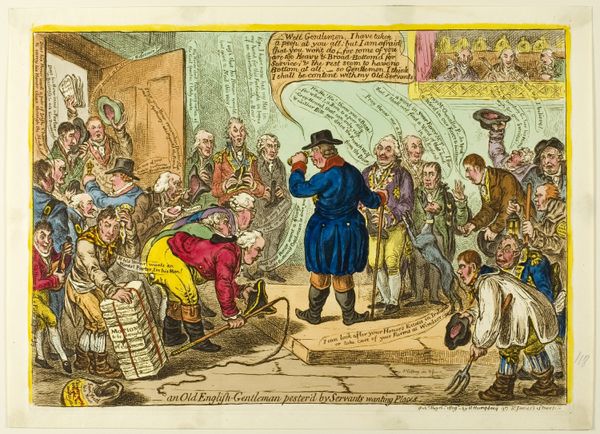
drawing, print, etching, paper, ink, pen
#
drawing
#
narrative-art
# print
#
etching
#
caricature
#
paper
#
ink
#
romanticism
#
pen
#
genre-painting
#
watercolor
Dimensions: 215 × 330 mm (image); 237 × 334 mm (sheet, cut to platemark)
Copyright: Public Domain
Editor: We're looking at "Lacing in Style" by George Cruikshank, an etching with pen, ink and watercolor from around 1819. It's... busy! So many figures and so much text. I’m immediately drawn to the detailed rendering of the corset lacing, it looks so unbelievably tight! What catches your eye in this piece? Curator: What grabs me is precisely that tension. The visual of this man laced so tightly relies completely on the labor involved. Who is lacing him? Where did these materials – the paper, the ink, the dyes for the watercolor – come from? What was the printer paid? Editor: I hadn’t thought about it like that. So, you’re saying to truly understand the print we should look at all of the materials and social processes that were necessary for it to exist? Curator: Precisely! Consider the title itself. "Lacing in Style, or a Dandy Midshipman Preparing for Action!" The "action" here may be connected to the social action happening around production, labor, and display of class and gender. Also the production of caricatures…do you notice the satirical context in that? Editor: The print is very critical and lampooning what is perceives as ‘feminine’ –the caption explicitly mocks the Dandy in his ‘action’. This has roots in the industrial revolution that further emphasized and challenged boundaries between production, gender roles and work. Curator: Exactly, and prints like these are part of that discussion – by revealing how this man, with the support of the industry, and labor, came to “lace” his body as form of distinction. Editor: That's a great point. I was so focused on the visual and the humour, but thinking about it as a product of its time, of labor and materials shifts my understanding quite a bit. Curator: That's the key. To understand any work of art you must examine all aspects of its existence, production and its meaning and consumption as it relates to material conditions.
Comments
No comments
Be the first to comment and join the conversation on the ultimate creative platform.
